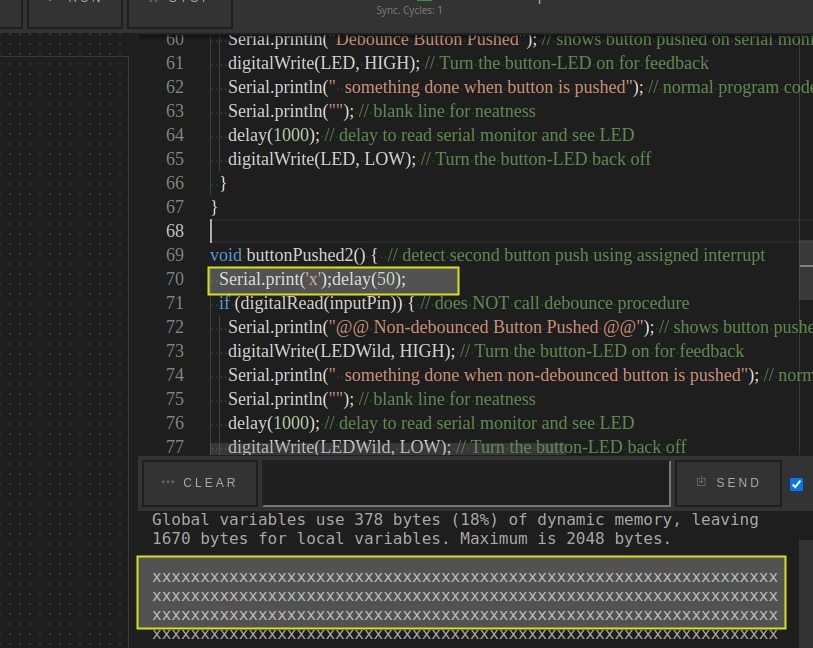Its a PULLUP problem... this code must print:
[up] 1
[down] 1
void setup() {
Serial.begin(115200);
pinMode(2, INPUT_PULLUP);
digitalWrite(2, HIGH);
pinMode(3, INPUT_PULLUP);
digitalWrite(3, HIGH);
pinMode(13, OUTPUT);
digitalWrite(13, HIGH);
delay(1000); // Pause for 2 seconds
Serial.print("[up] \n"); Serial.println(digitalRead(3));
Serial.print("[down] \n"); Serial.println(digitalRead(2));
delay(1000); // Pause for 2 seconds
}
void loop() {
int up = digitalRead(3);
int down = digitalRead(2);
if (up == LOW) {;
Serial.println("[up]");
delay(200);
};
if (down == LOW) {
Serial.println("[down]");
delay(200);
};
}










 And here it is changed
And here it is changed





Hi, i'm running some examples of interrupt and I found strange behavior.
Based on the example (which works correctly in wokwi online) https://wokwi.com/projects/318885209198035539
If I run the same example in Avr8js it will trigger the interrupt (e not call loop()) As the inputs are configured as PULLUP, was this supposed to happen?
I tried simulating the same behavior, removing the buttons from the example, and it still works correctly https://wokwi.com/projects/328609280331612756
But no work in avr8js-electron-playground , and avr8js demo in my code (which is based on his..) I wonder if I need to configure something else.
Reproduce: